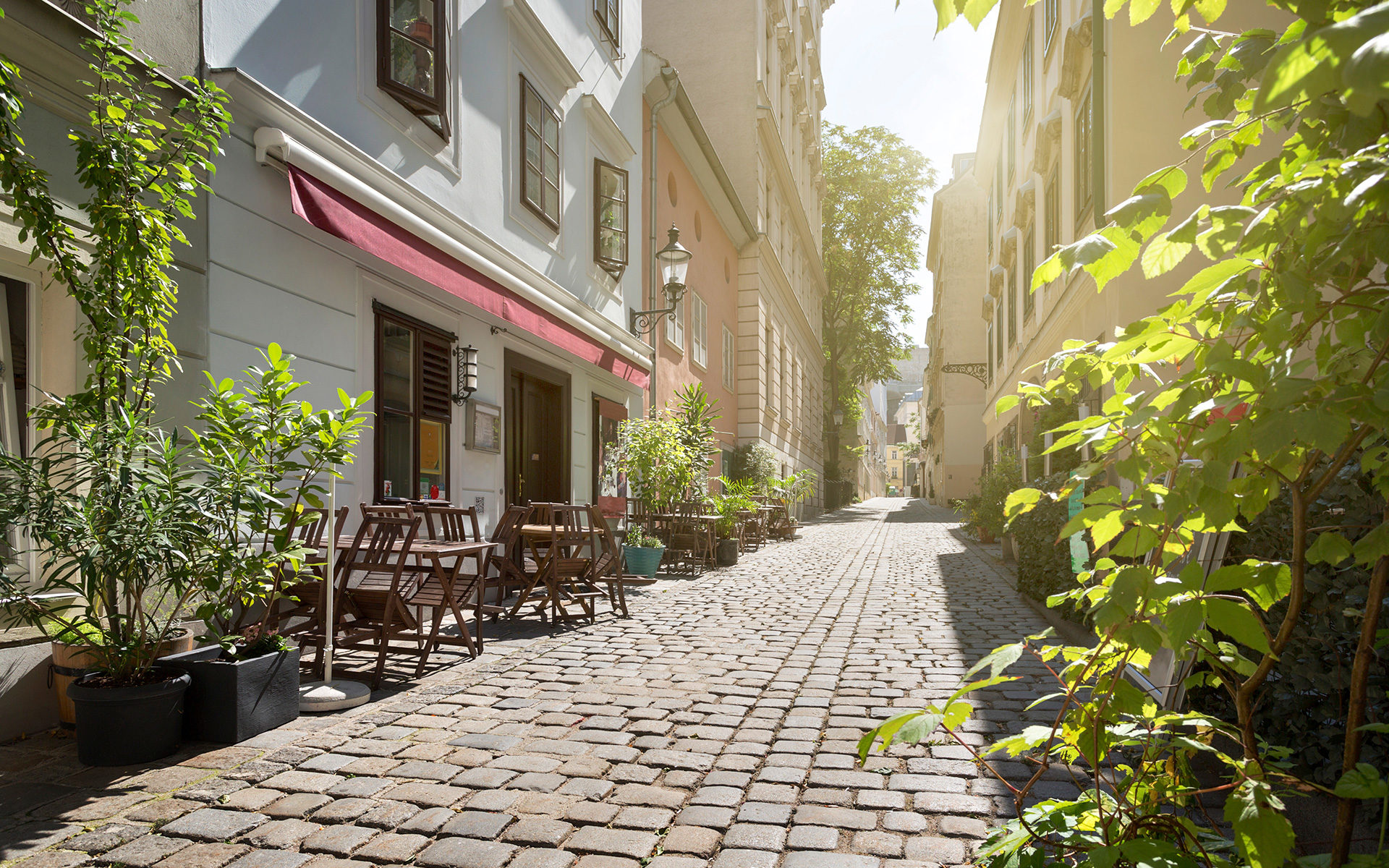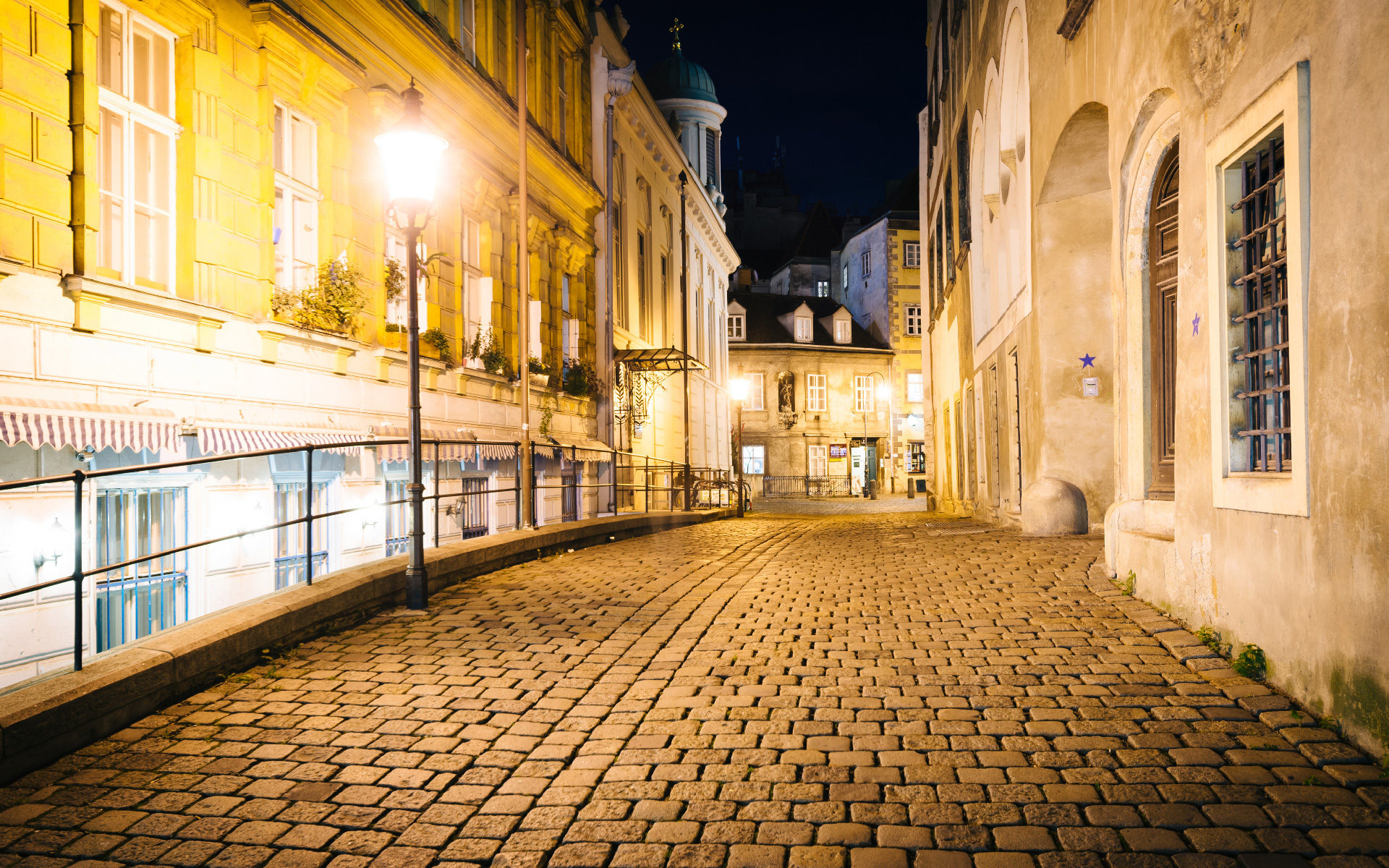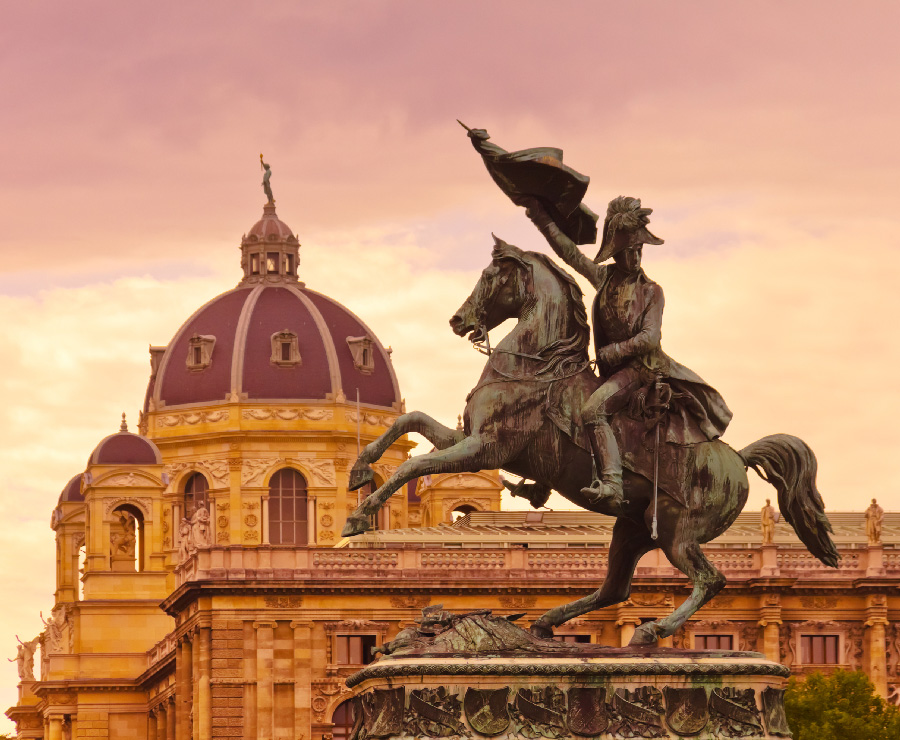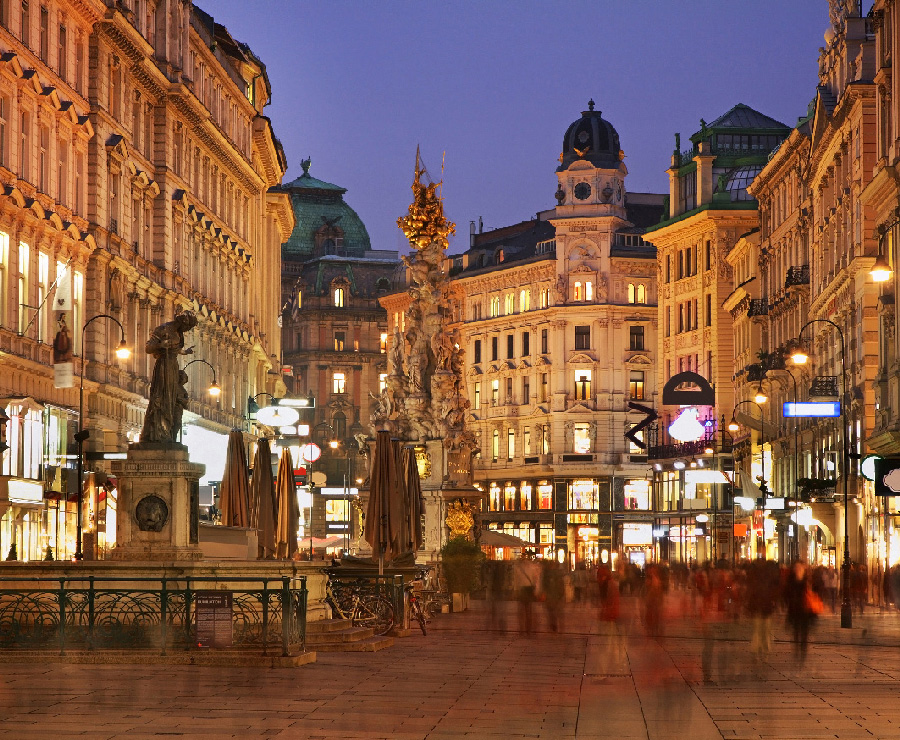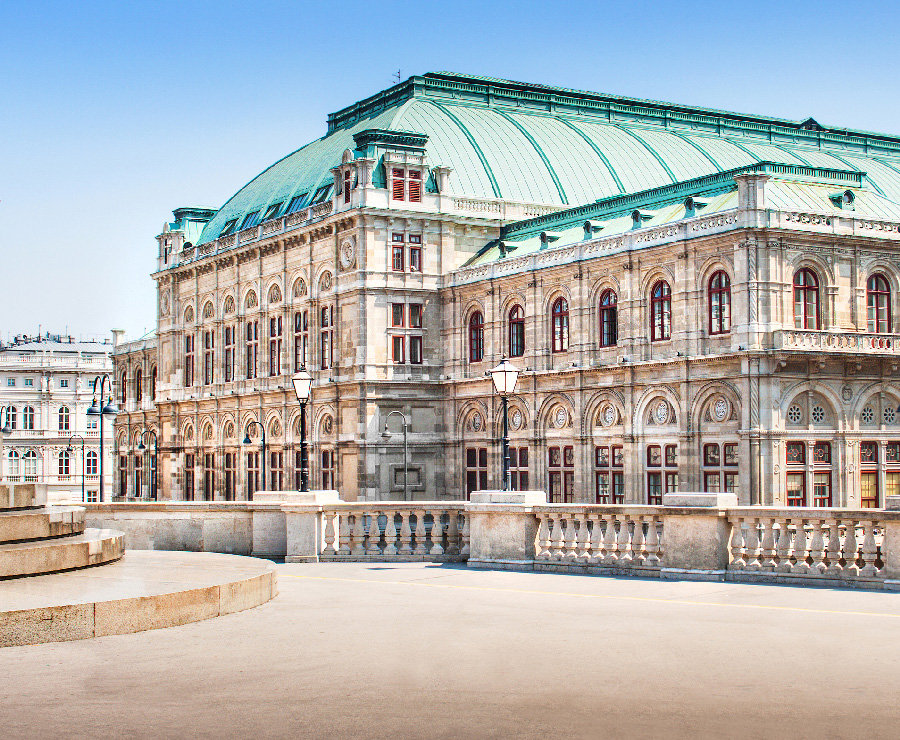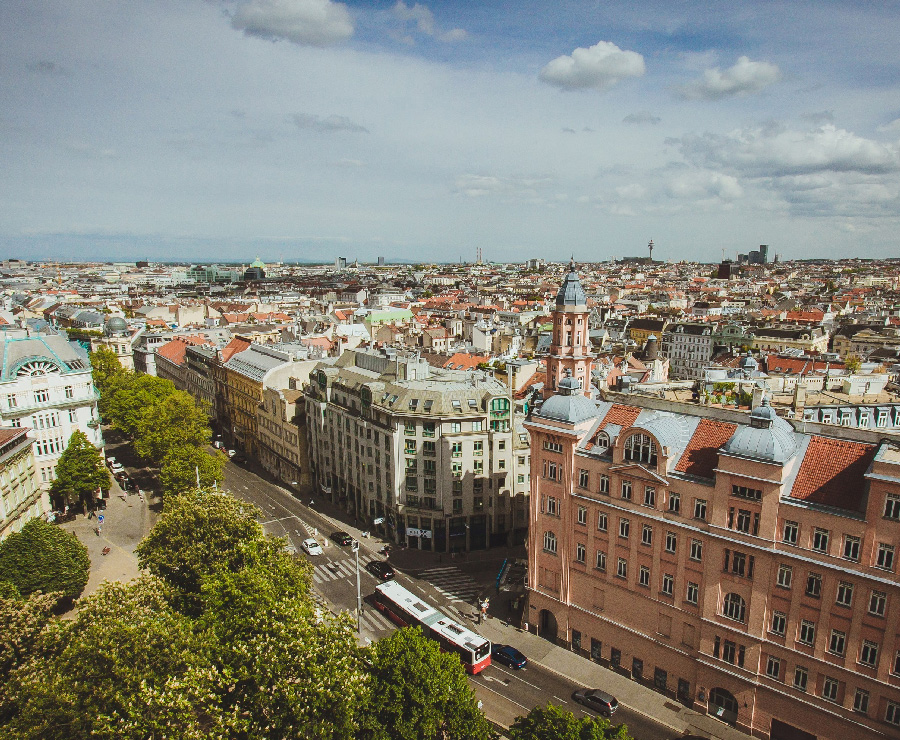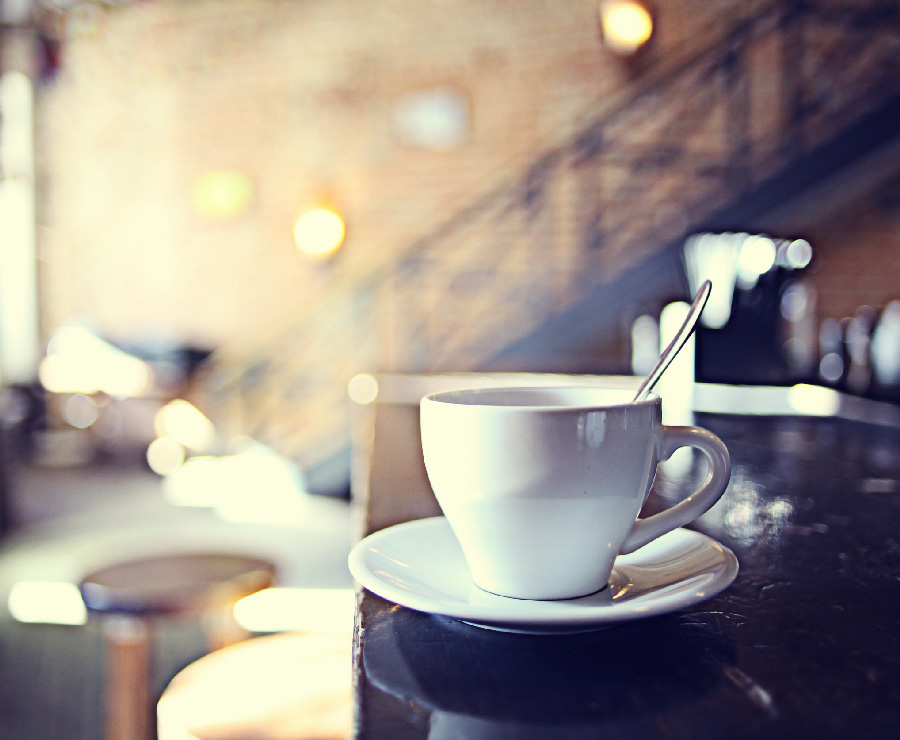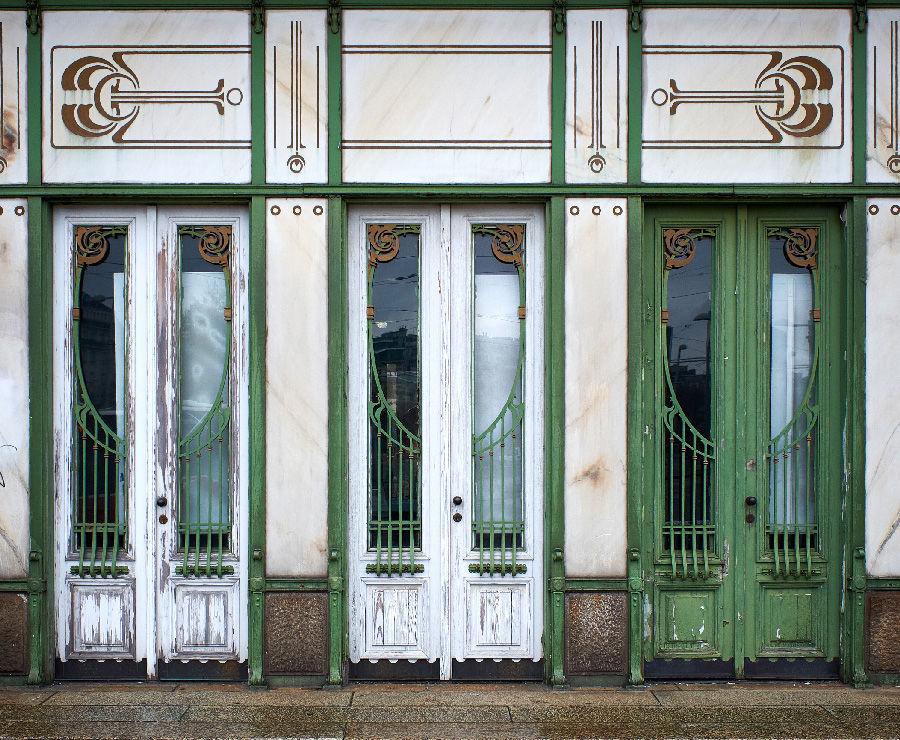Kimberly from the USA
via booking.com
Excursion to the Spittelberg:
the “village in the city of Vienna”
The Spittelberg is clearly one of the most beautiful parts of Vienna. It is the second largest pedestrian area in the city with many idyllic squares and lanes.
And rightly so: The stalls and markets have plenty of regional and home-made food to offer and the atmosphere of the “village in Vienna” makes a visit simply unique and contemplative in the often stressful Christmas season. Especially tasty are the freshly prepared potato pancakes; Unfortunately, this is not an insider tip, because here you will be a good 15 minutes in line – but the wait is worth it!
The Inner City –
off the beaten track
Admittedly, in the 1st district it’s often busy, especially in the high season. Understandable, there are so many beautiful and impressive things to see! If you want to “catch your breath” and discover places off the beaten track, try our secret tips.
Directly behind the Sonnenfelsgasse Apartments, you will find the little hidden Fenstercafé (Window café). Nomen est omen: This adorable café is literally just a window and offers first-class take-away coffee at a top price (espresso: € 0,95).
If the St. Stephen’s Cathedral is too busy for you, you can find a great alternative hidden just around the corner: the church of St. Peter is inconspicuous from the outside, but at least as impressive as the landmark of Vienna – and that without tourist crowds. Here you can admire the ceiling frescoes and murals in peace.If you traditionally want to eat Austrian but do not get a seat at the Figlmüller or in the Plachutta, try the Kern’s Beisl or the Weibel’s Wirtshaus. Both are extremely popular with the real Viennese and offer great Austrian dishes at fair prices.
History
The 1st district of Vienna, or also called “Innere Stadt”, forms the historical core of the capital of Austria. Basically, the 1st district is more or less delimited by the Vienna Ring Road. Until 1850, Vienna consisted only of the first district – until the adjoining communities were added. Up until now, the first district is the political, economic and spiritual centre of the capital.
Sightseeing & Attractions
Well, we personally think that the whole first district of Vienna is an attracion – but here you will find “only” the highlights of the Inner City.
To explore the outer side of the inner city, we recommend a sporty walk around the “Ring” (Vienna Ring Road). Here you can admire all the major buildings in Vienna. It’s best to simply pack your travel guide and read along walking. For all the more comfortable travellers among us, there’s the historic Vienna “Ringtram” with audio guides, which circulates daily on the ring road and has all the important information about the town hall, university, parliament or Hofburg ready for you.
To discover the true centre of the city, aka Stephansplatz, take this place as the starting point of your day tour and take a look inside this truly unique cathedral. The ascent to the south tower on 343 stairs is a great experience for active visitors! Then, you have several options: the shopping enthusiasts go to Kärntner Street or Rotenturm Street, for more sightseeing you take the street “Graben”. Passing the Plague Column, turn left at the end to reach the Spanish Riding School, the Hofburg and the Heroes Square. If you still have that necessary extra money, you can also take this route with the Fiaker (horse carriages) and feel like in baroque times.
Art & Culture
The Baroque buildings of the 1st district make you feel like travelling back in time. City walks a bit off the beaten track – e.g. the Blood Alley district (“Blutgassenviertel” or the Wollzeileviertel ) have many hidden courtyards where you can see the typical “Pawlatschen”.
Museum-enthusiastic visitors are in the first district, so to speak, in paradise. The Albertina lures with modern exhibitions on art and film, in the Hofburg you will learn a lot about the (political) history of Vienna and Austria and a visit to the Austrian National Library is enriching in many ways. While the Viennese still puzzle over what is the Natural History and the Art History Museum on Marie-Theresien-Platz, you better find out right away and visit both of the amazing long-term exhibitions.
For all concert and musical fans, the 1st district has THE perfect institution: the Ronacher. Let yourself be enchanted by vampires, lions or even Mozart for an evening.
History
A brief history of the district Mariahilf: in 1850, five independent communities joined together to form the 6th district of Vienna. After some back and forth about the districts’ boundaries, Mariahilf exists since 1862 in its current version. The name has even something to do with Greece: in the 16th century, Don Juan de Austria, an illegitimate son of Emperor Charles V, led the battle against the Ottomans and is said to have often called “Maria, help!”. His prayers were answered because he won the battle.
Culinary
There are things in Vienna that you just cannot change and that’s just how it is. For example: You can get the best Wiener Schnitzel at Figlmüller and the best Tafelspitz at Plachutta. Over and out.
But of course, the first district has so much more to offer than these two classics. The Motto am Fluss is very popular among the Viennese and offers a great view of the Danube Canal as well as imaginative cuisine. Excellent Italian dishes can be enjoyed at Il Melograno and delicious Japanese cuisine can be found at Shiki.
For in-between and at any time of day, the Viennese love their traditional Schwarzes Kameel (black camel) – with a bread-roll and a white wine spritzer in the hand, it means “to see and to be seen”.
Also, all coffee lovers will certainly get lucky in the first district. The traditional cafés include Café Diglas, Café Alt Wien or Kleines Kaffee. In the bakery Aida, you will get lost in delicious pastries, but those who want to enjoy a classic Sachertorte (despite waiting time), go to the Sacher Café in the Sacher Hotel.
Art & Culture
Particularly noteworthy are the Art Nouveau houses by Otto Wagner. These can be admired especially well on a walk from the left Wienzeile towards Karlsplatz. Mariahilfer Church is located directly on Mariahilfer Straße – it is inconspicuous on the outside, but a look inside is well worth it!
With two top institutions of the Vereinigte Bühnen Wien (“United Stages of Vienna”), Mariahilf has a lot to offer theater-wise: the Raimundtheater brings modern musicals to the stage; at the Theater an der Wien you can see great concerts all year round.
The Museum Quarter, located at the end of Mariahilfer Straße, attracts all museum and art lovers. There is also a lot going on in the evening: young people meet at the MQ-typical “Enzi” furniture in the courtyard and spend the balmy summer nights there. So, if you want to see typical Viennese summer night life, just stop by and join in!
For our young (and older) guests, we recommend the “house of the sea” in the former flak tower. Tip: on the roof of the tower there is a café with a great view over Vienna. However, you can only visit this with a ticket to the marine world.
Shopping & Nightlife
While you can find all the big brands of the masses in the Kärntner Street, all exclusive shops and designers are ready for you at the Graben. In Wollzeile, you can discover small retailers and take home your individual souvenirs from Vienna.
In the evening, we suggest a visit to the American Loos Bar: this small and cosy bar with a hip mirrored ceiling is definitely worth a visit. For all pub fans, we recommend the Bockshorn Irish Pub – you’ll be surprised how much playful deco fits in such a small bar.
The night owls can then go to the so-called “Bermuda Triangle” (around Schwedenplatz) and hop around the bars and clubs. Other popular addresses of the Viennese are the “Säulenhalle”, the “Platzhirsch” or the “Passage”.
